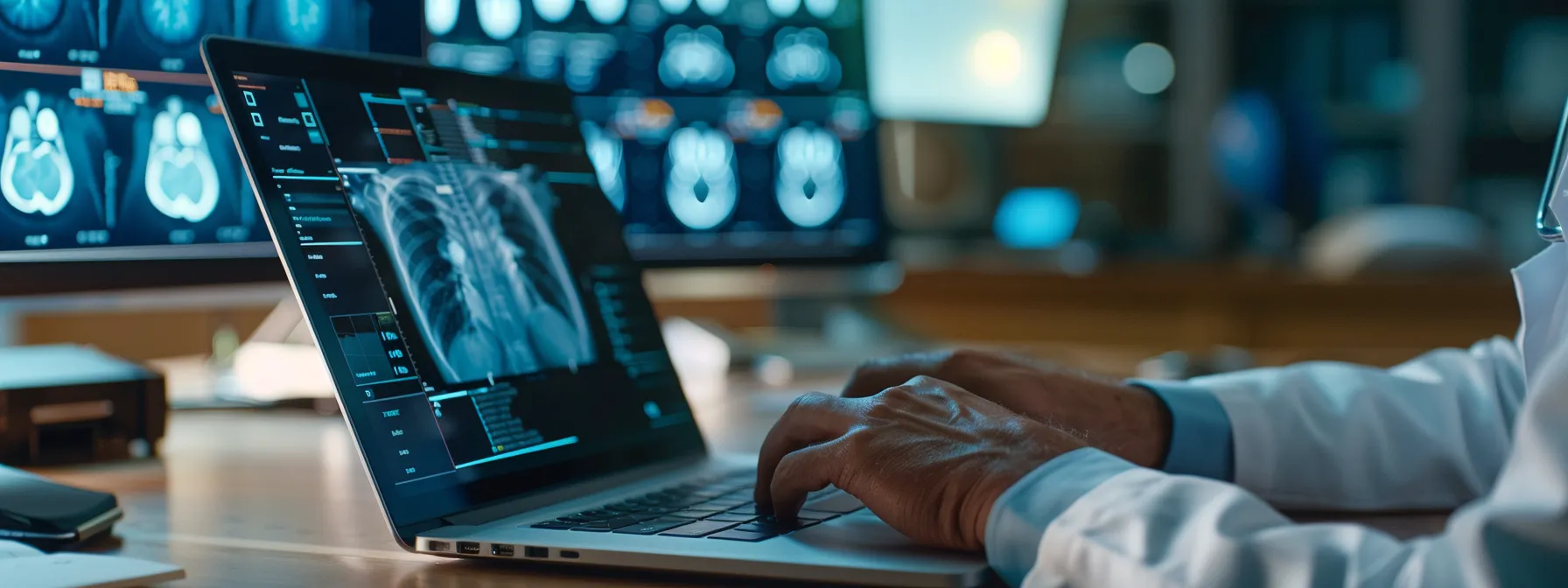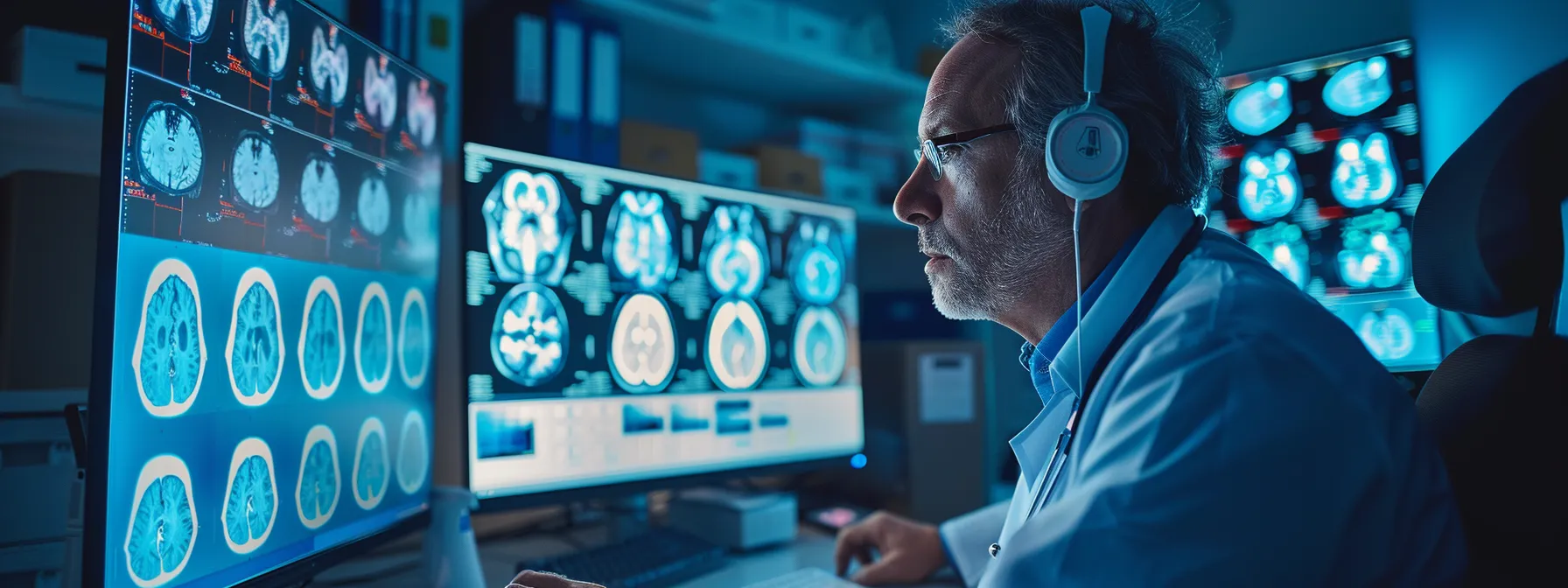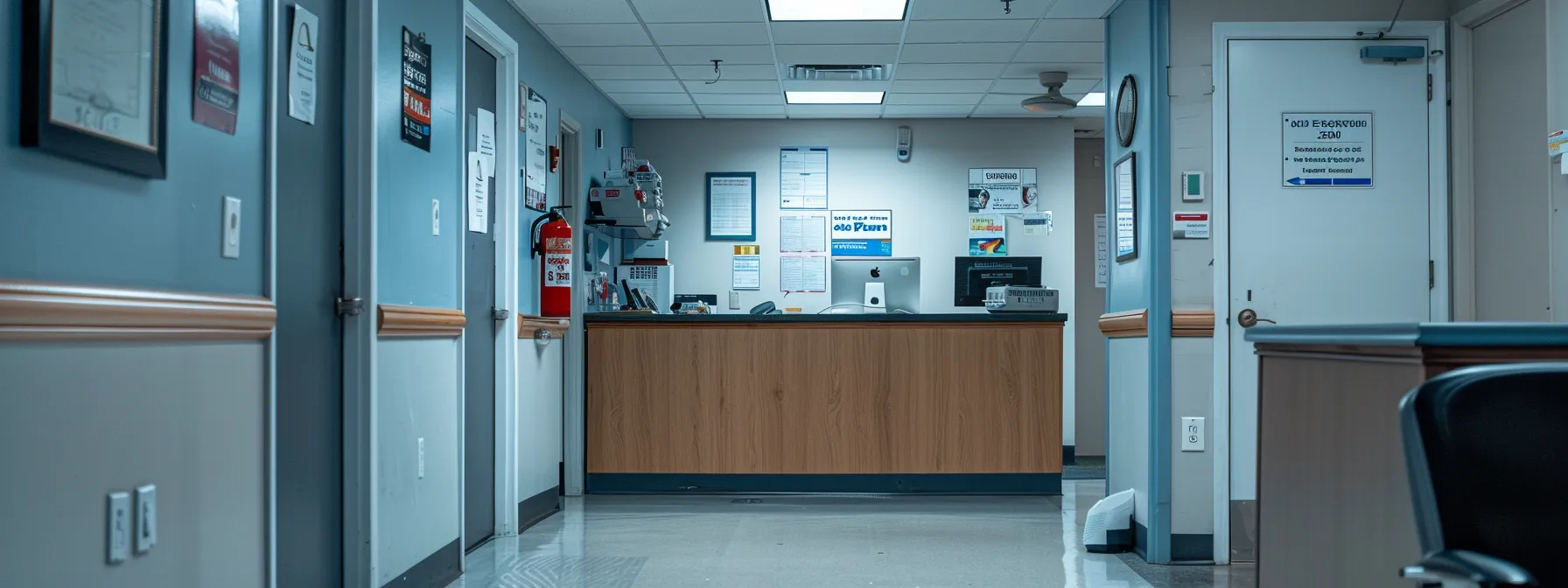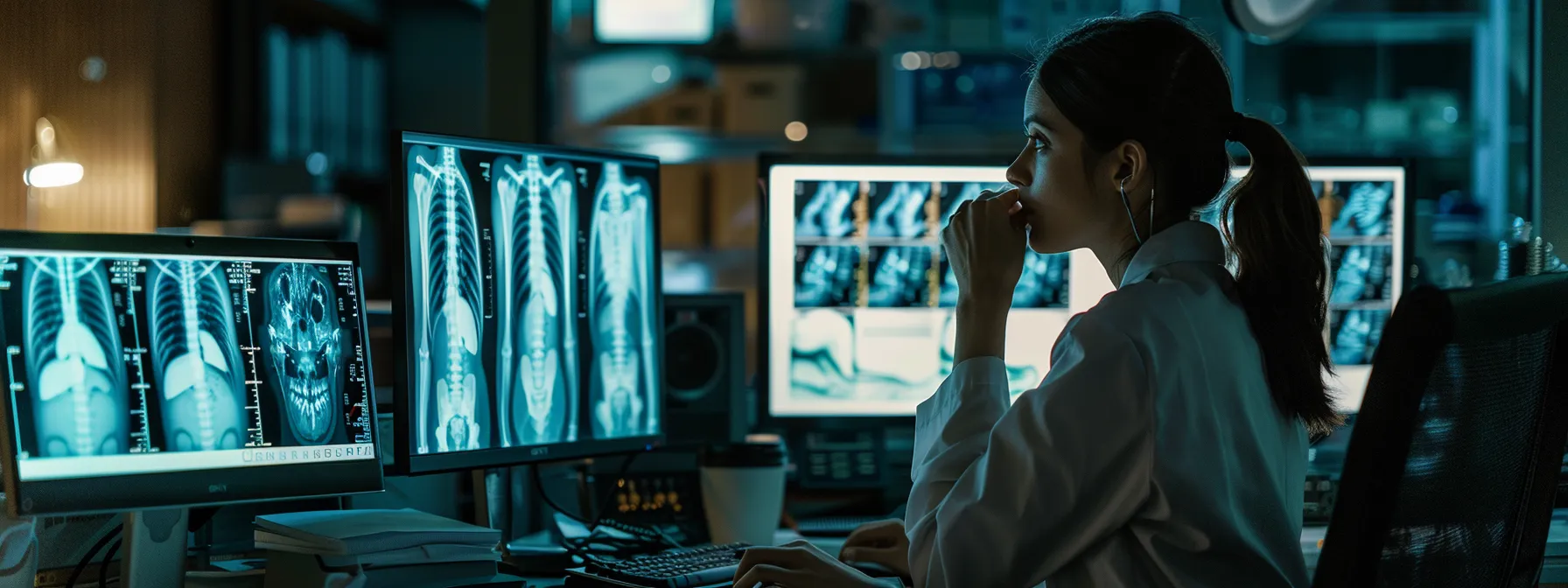Radiology SEO: Elevating Online Presence for Professionals
Radiology professionals face unique challenges in the digital landscape, where attracting patients requires a strategic approach to search engine optimization (SEO) and targeted advertising. By implementing effective SEO techniques, radiologists can enhance their online visibility and connect with their target audience more effectively. In this article, you’ll discover how to elevate your radiology practice’s online presence through proven SEO strategies, engaging content creation, and smart use of social media platforms. Keep reading to unlock the potential of digital marketing for your radiology business and learn how to stand out in a competitive healthcare market.
Key Takeaways
- Identify core radiology services and analyze competitor keywords to improve online visibility
- Optimize website design for user experience and faster load times to reduce bounce rates
- Create engaging content that showcases expertise and addresses patient concerns to build credibility
- Implement local SEO strategies to boost visibility in search results for nearby patients
- Leverage social media platforms to share educational content and engage with followers to drive website traffic
Crafting Keyword Strategies for Radiology Professionals

Crafting effective keyword strategies is essential for radiology professionals aiming to improve their online visibility. By focusing on core services and analyzing competitor keywords, you can optimize your web design and content to attract more patients seeking specialized therapy or imaging services. Leveraging internet analytics tools helps identify high-value keywords that potential clients use when searching for radiology services or insurance coverage. This data-driven approach enables you to tailor your digital marketing efforts and outperform competitors in search engine rankings.
Identifying Core Radiology Services for Keyword Focus
Identify your core radiology services to develop a focused keyword strategy. Include essential procedures like CT scans, MRIs, and X-rays in your list. Prioritize these services based on your practice’s specialties and patient demand.
Consider your physicians’ expertise and board certifications when selecting keywords. Highlight unique qualifications or subspecialties to differentiate your practice from competitors. This approach helps attract patients seeking specific radiology services or information about particular conditions.
Utilize your patient mailing list to gather insights on frequently requested services. Analyze this data to refine your keyword strategy and ensure it aligns with your target audience’s needs. Incorporate these findings into your website content and digital marketing efforts to improve your online visibility.
Analyzing Competitor Keywords to Find Opportunities
Analyze your competitors’ websites and online presence to uncover valuable keyword opportunities in the radiology field. Use search engine tools to identify the terms they rank for, particularly those related to magnetic resonance imaging and other medical imaging technologies. This research will help you discover gaps in your own keyword strategy and find new ways to differentiate your practice.
Explore health-related forums and social media platforms to gain insights into the language patients use when discussing radiology services. Pay attention to specific phrases and questions they ask about medical imaging procedures. Incorporate these natural language patterns into your keyword strategy to better align with patient search behavior and improve your visibility in search engine results.
Leverage technology and SEO tools to conduct a comprehensive competitor keyword analysis. Focus on long-tail keywords that combine specific radiology services with location-based terms to target local patients effectively. By identifying these niche opportunities, you can create targeted content that addresses patient needs and outperforms your competitors in search rankings.
- Analyze competitor websites for keyword insights
- Explore health forums and social media for patient language
- Use SEO tools for comprehensive keyword analysis
- Focus on long-tail and location-based keywords
- Create targeted content to outperform competitors
Effective keyword strategies lay the foundation for radiology professionals to reach their target audience. Now, let’s explore how to enhance your website’s user experience to keep those visitors engaged and convert them into patients.
Optimizing Your Radiology Website for User Experience

To elevate your radiology clinic’s online presence and boost lead generation, you must optimize your website for user experience. As a medical specialty that relies heavily on visual information, your site should reflect the precision and clarity of your work. Implementing responsive design ensures seamless access across all devices, catering to patients and referring physicians who may use Doximity or other platforms to find your services. By speeding up page load times, you reduce bounce rates and keep visitors engaged with your educational content and service offerings. These improvements not only enhance user satisfaction but also contribute to better search engine rankings, ultimately driving more potential patients to your practice.
Implementing Responsive Design for All Devices
Implement responsive design to ensure your radiology website delivers an optimal experience across all devices. Your patients and referring physicians may access your site using smartphones, tablets, or desktop computers, so adapting your content to different screen sizes is crucial. This approach enhances user engagement and improves your search engine rankings.
Consider the unique needs of radiography professionals and patients when designing your responsive website. Include features that allow easy viewing of medical images, such as zoom capabilities and high-resolution displays. Ensure that information about cancer screenings and other specialized services is easily accessible on all devices.
Optimize your responsive design to accommodate health insurance information and data-heavy content. Create collapsible sections or tabs to organize complex information without overwhelming mobile users. Prioritize the most important content for smaller screens while maintaining access to comprehensive details on larger devices:
- Adapt layouts to different screen sizes
- Optimize image viewing capabilities
- Organize complex information with collapsible sections
- Prioritize content for mobile users
- Ensure easy access to comprehensive details on larger screens
Speeding Up Page Load Times to Reduce Bounce Rates
Optimize your radiology website’s page load times to reduce bounce rates and improve user experience for patients seeking information about ultrasound procedures or nuclear medicine treatments. Compress images and implement lazy loading techniques to ensure that medical visuals load quickly without compromising quality. This approach helps patients access vital information about their disease or potential surgery options without frustrating delays.
Minimize HTTP requests and leverage browser caching to speed up your website’s performance across various devices. By streamlining your site’s code and resources, you enable faster access to critical information about diagnostic imaging and treatment options in nuclear medicine. This improved speed enhances the user experience for both patients and referring physicians, encouraging them to explore your services further.
Utilize content delivery networks (CDNs) to distribute your website’s assets across multiple servers, reducing load times for users accessing your site from different geographical locations. This strategy is particularly beneficial for radiology practices serving patients across wide areas or collaborating with remote specialists in various fields of medicine. Faster load times lead to lower bounce rates, increasing the likelihood that visitors will engage with your content and schedule appointments for ultrasound examinations or other radiological procedures.
Elevate your radiology website beyond mere optimization. Showcase your expertise with compelling content that captivates and informs potential patients.
Creating Engaging Content That Highlights Radiology Expertise

Boost your radiology practice’s online visibility and strengthen your brand by creating engaging content that showcases your expertise. Leverage information technology to develop comprehensive resources that address patient concerns and highlight your specialized knowledge. By aligning your content strategy with guidelines from the Radiological Society of North America, you’ll establish credibility within the medical community. Focus on creating informative blog posts about radiological procedures and sharing patient testimonials to build trust. This approach will not only attract potential patients but also position your practice as a leader in interventional radiology and other specialized fields.
Developing Informative Blog Posts on Radiological Procedures
Develop informative blog posts on radiological procedures to educate patients and showcase your expertise in tomography and mammography. Focus on explaining complex medical concepts in simple terms, addressing common patient concerns, and highlighting the benefits of early detection through imaging techniques. Incorporate your practice’s telephone number to encourage readers to schedule appointments or ask questions about specific procedures.
Craft content that aligns with your overall marketing strategy, addressing topics that resonate with your target audience and emphasize your practice’s unique strengths. Discuss advancements in radiology technology, such as 3D mammography or low-dose CT scans, to demonstrate your commitment to providing cutting-edge care. Include patient testimonials and success stories to build trust and credibility with potential clients.
Optimize your blog posts for search engines by incorporating relevant keywords and providing valuable, in-depth information on radiological procedures. Create a content calendar to ensure consistent publication of new articles, covering a wide range of topics from preventive screenings to diagnostic imaging for specific conditions. Encourage readers to share your content on social media and include your telephone contact information to facilitate easy communication with your practice.
Using Patient Testimonials to Build Trust and Credibility
Leverage patient testimonials to build trust and credibility for your radiology practice. Showcase real-life experiences of patients who have undergone various procedures, from routine organ scans to complex biopsies. Design your testimonial section to highlight positive outcomes and exceptional care, reinforcing your commitment to patient health and well-being.
Incorporate testimonials into your marketing strategy by featuring them prominently on your website and social media channels. Focus on stories that demonstrate how your radiology services have positively impacted patients’ lives, emphasizing the importance of early detection and accurate diagnoses. This approach helps potential patients understand the value of your expertise in health care:
Use testimonials to address common concerns and highlight your practice’s unique strengths. Include stories from patients who were initially anxious about procedures like MRIs or mammograms but had positive experiences due to your staff’s expertise and compassionate care. This approach helps alleviate potential patients’ fears and positions your radiology practice as a trusted provider in the medical community.
Captivating content draws patients in, but local visibility ensures they find you. Discover how to dominate your local market and attract more patients through strategic SEO tactics tailored for radiologists.
Leveraging Local SEO Tactics for Radiologists

Boost your radiology practice’s visibility in local search results by implementing targeted SEO strategies. Optimize your Google My Business listing to enable potential patients to find your services quickly when searching for radiologists in their area. Engage with your community to build local backlinks, strengthening your online presence and establishing your practice as a trusted healthcare provider. These tactics not only improve your search rankings but also support the development of a robust digital footprint that sets you apart from competitors. By focusing on local SEO, you’ll attract more patients seeking specialized services, from general radiography to dental imaging, and solidify your position as a leading radiology provider in your region.
Optimizing Google My Business Listing for Local Searches
Optimize your Google My Business (GMB) listing to enhance your radiology practice’s visibility in local searches. Ensure your profile is complete with accurate information about your services, including teleradiology options and board-certified radiologists. Use relevant keywords in your business description to improve your chances of appearing in search results for specific radiology services.
Regularly update your GMB listing with fresh content, such as posts about new imaging technology or research advancements in radiology. Encourage satisfied patients to leave reviews, as positive feedback can significantly boost your local search rankings. Respond promptly to reviews and questions to demonstrate your commitment to patient care and engagement.
Leverage GMB features to showcase your expertise and set your practice apart from competitors. Upload high-quality images of your facility and equipment, and consider adding virtual tours to give potential patients a glimpse of your modern, welcoming environment. Utilize the Q&A section to address common patient concerns and highlight your radiology experts’ qualifications:
- Complete your GMB profile with accurate information
- Use relevant keywords in your business description
- Regularly update with fresh content and encourage reviews
- Showcase expertise through images and virtual tours
- Utilize Q&A section to address patient concerns
Building Local Backlinks Through Community Engagement
Engage with local health organizations and medical facilities to build valuable backlinks for your radiology practice. Offer your expertise in image interpretation and radiation therapy to community health initiatives, positioning your practice as a trusted resource. This approach not only strengthens your digital marketing efforts but also establishes your reputation as a leader in radiological services.
Participate in local events and conferences related to healthcare and medical imaging. Present informative sessions on topics like the latest advancements in diagnostic imaging or the benefits of early cancer detection through radiological screenings. Create an FAQ section on your website addressing common questions about these presentations, and encourage event organizers to link back to your resource page.
Collaborate with local medical schools and universities to provide educational resources on radiology. Offer guest lectures or contribute to research projects, showcasing your expertise in specialized areas such as interventional radiology or pediatric imaging. This collaboration can generate high-quality backlinks from educational institutions, boosting your search engine rankings and helping you generate leads from prospective patients and referring physicians.
SEO extends beyond local strategies for radiologists. Social media platforms offer powerful tools to amplify your online presence and attract more patients.
Utilizing Social Media Platforms to Boost SEO Efforts

Harness the power of social media platforms to amplify your radiology practice’s SEO efforts and expand your digital footprint in the ever-evolving healthcare landscape. By leveraging popular channels, you can effectively disseminate educational content and service updates to a broader audience, while engaging with followers to drive traffic to your website. This approach not only enhances your online visibility but also positions your practice as a trusted resource in the United States’ competitive telehealth market. Embrace social media management strategies to stay ahead in the digital realm, ensuring your radiology services are easily accessible to patients across various web browsers and devices.
Sharing Educational Content and Service Updates Regularly
Share educational content and service updates regularly on social media platforms to boost your radiology practice’s SEO efforts. Create informative posts about fluoroscopy procedures and other imaging techniques to engage your audience and establish your expertise. Develop a consistent posting schedule to maintain visibility and encourage follower interaction.
Craft social media content that aligns with your practice’s policy and professional standards while addressing patient concerns and interests. Share updates about new equipment, advanced imaging technologies, or changes in your employment policies that may affect patient care. This approach demonstrates your commitment to transparency and patient education.
Analyze your audience’s behavior on social media platforms to refine your content strategy and improve engagement. Monitor which types of posts generate the most interest and adjust your approach accordingly. By tailoring your content to your followers’ preferences, you’ll increase the likelihood of shares and website visits, ultimately boosting your SEO efforts.
Engaging With Followers to Increase Website Traffic
Engage with your social media followers to drive traffic to your radiology website and showcase your expertise in digital radiography and neurosurgery. Respond promptly to comments and questions, demonstrating your knowledge and commitment to patient care. This interaction builds trust and encourages followers to visit your website for more in-depth information about imaging procedures and injury diagnostics.
Create interactive content that prompts followers to visit your website for additional resources. Share teasers of educational articles or case studies related to digital radiography techniques or neurosurgery advancements, enticing your audience to click through for the full content. This strategy increases website traffic and improves your overall SEO performance.
Leverage social media contests and challenges to boost engagement and drive traffic to your radiology practice’s website. Design quizzes or polls that test followers’ knowledge of medical imaging or common injuries, with the answers available on your site. This approach not only increases website visits but also positions your practice as a valuable educational resource in the radiology business:
- Respond promptly to comments and questions
- Share teasers of educational content
- Create interactive quizzes and polls
- Offer exclusive resources on your website
- Host live Q&A sessions with radiology experts
Frequently Asked Questions
How can radiologists choose the right keywords for their SEO strategy?
To choose the right keywords for their SEO strategy, radiologists should focus on specific medical terms and imaging procedures relevant to their practice. They can use keyword research tools to identify high-volume, low-competition phrases that potential patients are searching for online. Additionally, radiologists should consider local SEO by incorporating location-based keywords and phrases related to their services. Targeting long-tail keywords that address common patient questions or concerns can also help improve search visibility and attract more qualified leads to their website.
What website elements should radiologists optimize for better user experience?
Radiologists should optimize their website’s navigation structure, ensuring a clear menu layout and intuitive categorization of services and information. They should also focus on implementing responsive design, guaranteeing seamless access across various devices, and optimizing page load speeds for quick access to critical information. Another crucial element is the integration of user-friendly appointment scheduling systems and secure patient portals. These features streamline communication and data sharing between radiologists and patients, enhancing overall user experience and satisfaction with the website’s functionality.
What types of content can radiologists create to showcase their expertise?
Radiologists can create informative blog posts explaining various imaging techniques, their applications, and recent advancements in the field. They can also produce educational videos demonstrating how to interpret different types of medical images, such as X-rays, CT scans, and MRIs.
Another effective content type is case studies, where radiologists share interesting or challenging cases they’ve encountered. They can also develop infographics that simplify complex radiological concepts for patients and fellow healthcare professionals, showcasing their expertise in a visually appealing format.
How can radiologists improve their local search visibility?
Radiologists can enhance their local search visibility by optimizing their Google Business Profile. Ensure your profile is complete with accurate information, including services offered, business hours, and contact details. Encourage patients to leave reviews and respond to them promptly to boost your online reputation. Implement local SEO strategies on your website by including location-specific keywords and creating content that addresses common radiology concerns in your area. Collaborate with local healthcare providers and participate in community events to increase your visibility both online and offline.
Which social media platforms are most effective for radiologists’ SEO efforts?
Radiologists can boost their SEO efforts most effectively on LinkedIn and Twitter. These platforms allow for professional networking, sharing of medical research, and engaging with peers and patients. By consistently posting relevant content and using appropriate hashtags, radiologists can increase their online visibility and authority. Instagram and YouTube also offer opportunities for radiologists to improve their SEO. Visual content like medical imaging and educational videos can attract a wider audience and improve search rankings. However, these platforms require more time and resources to create engaging content compared to text-based social media.



